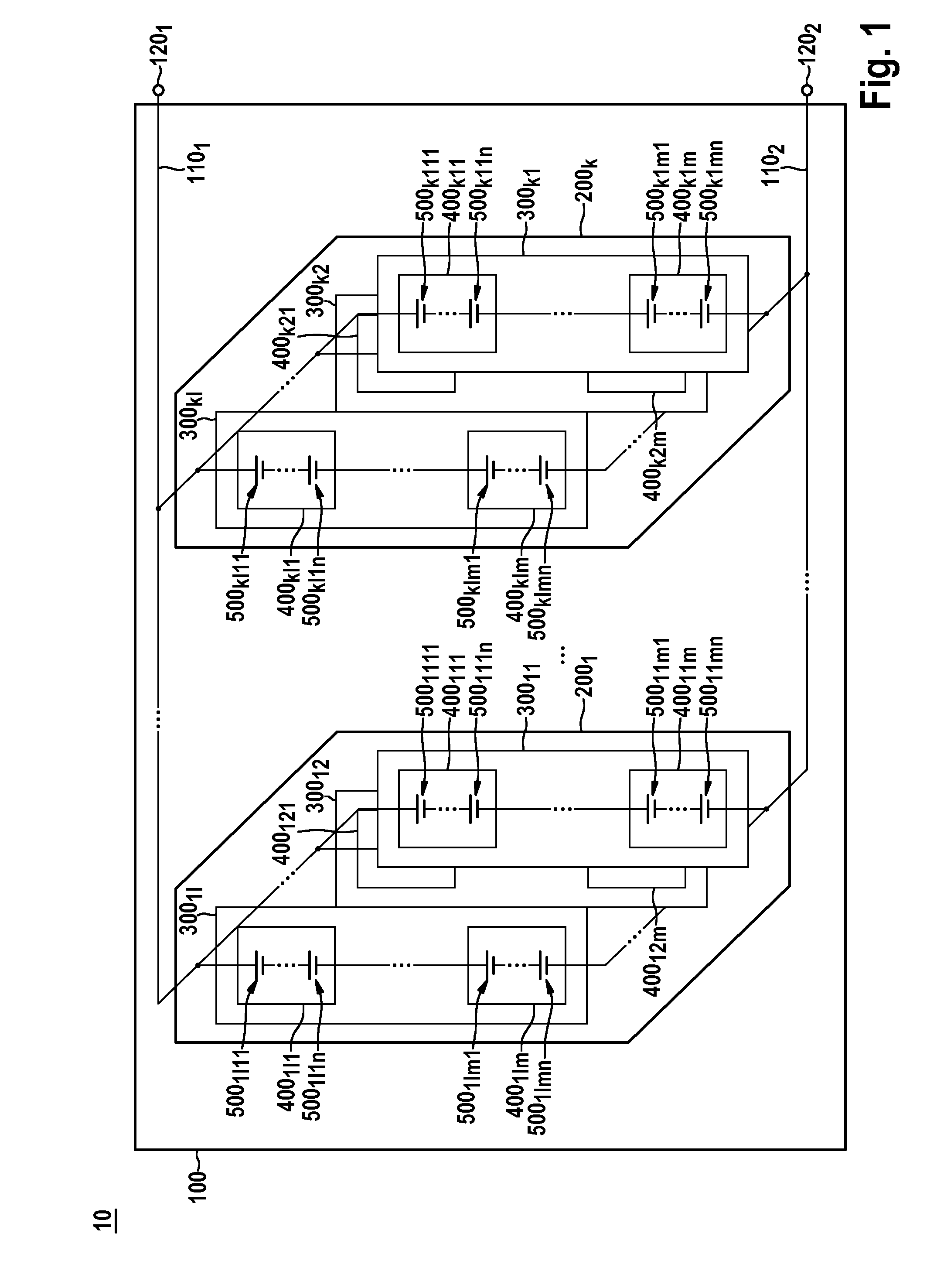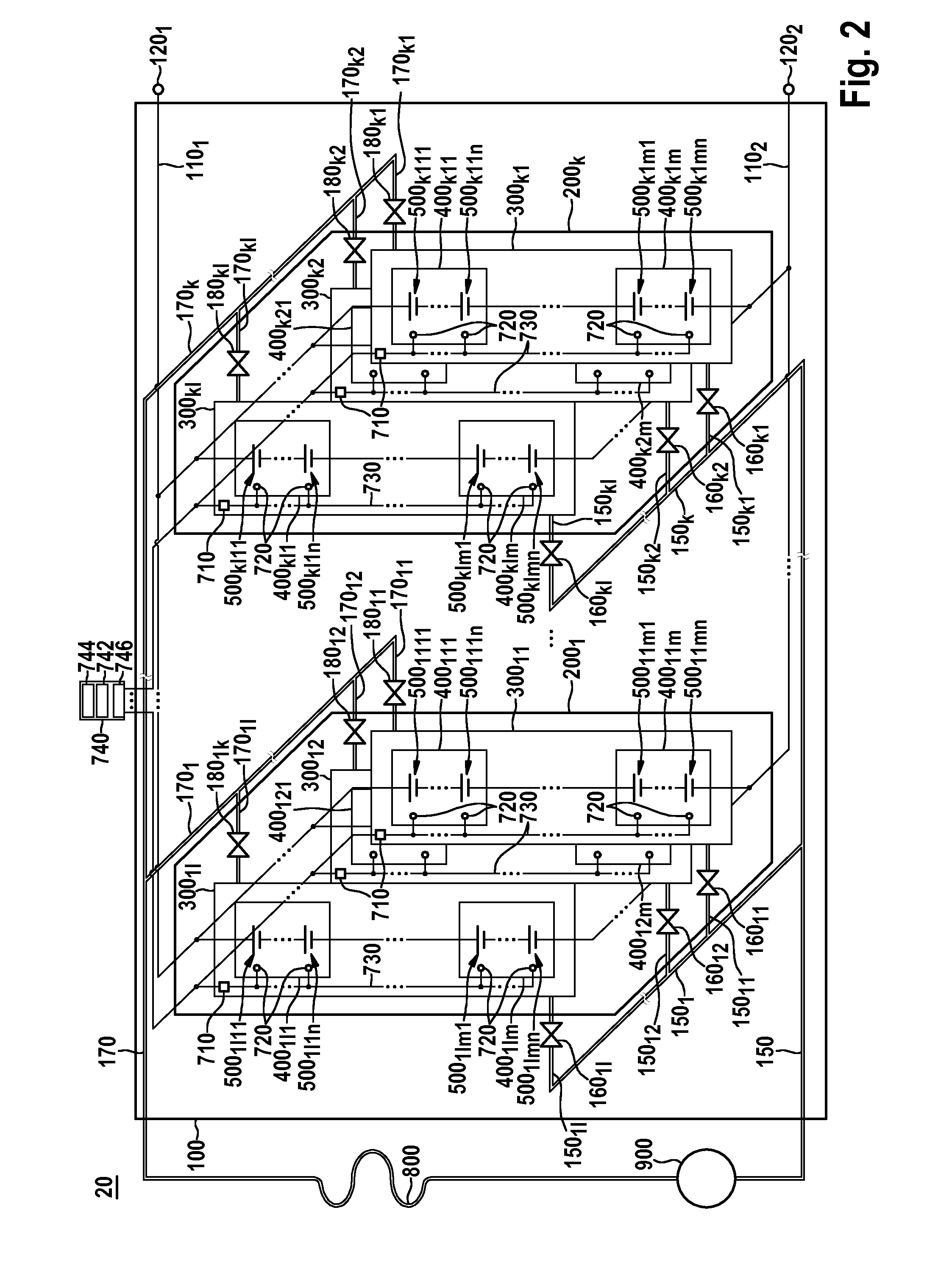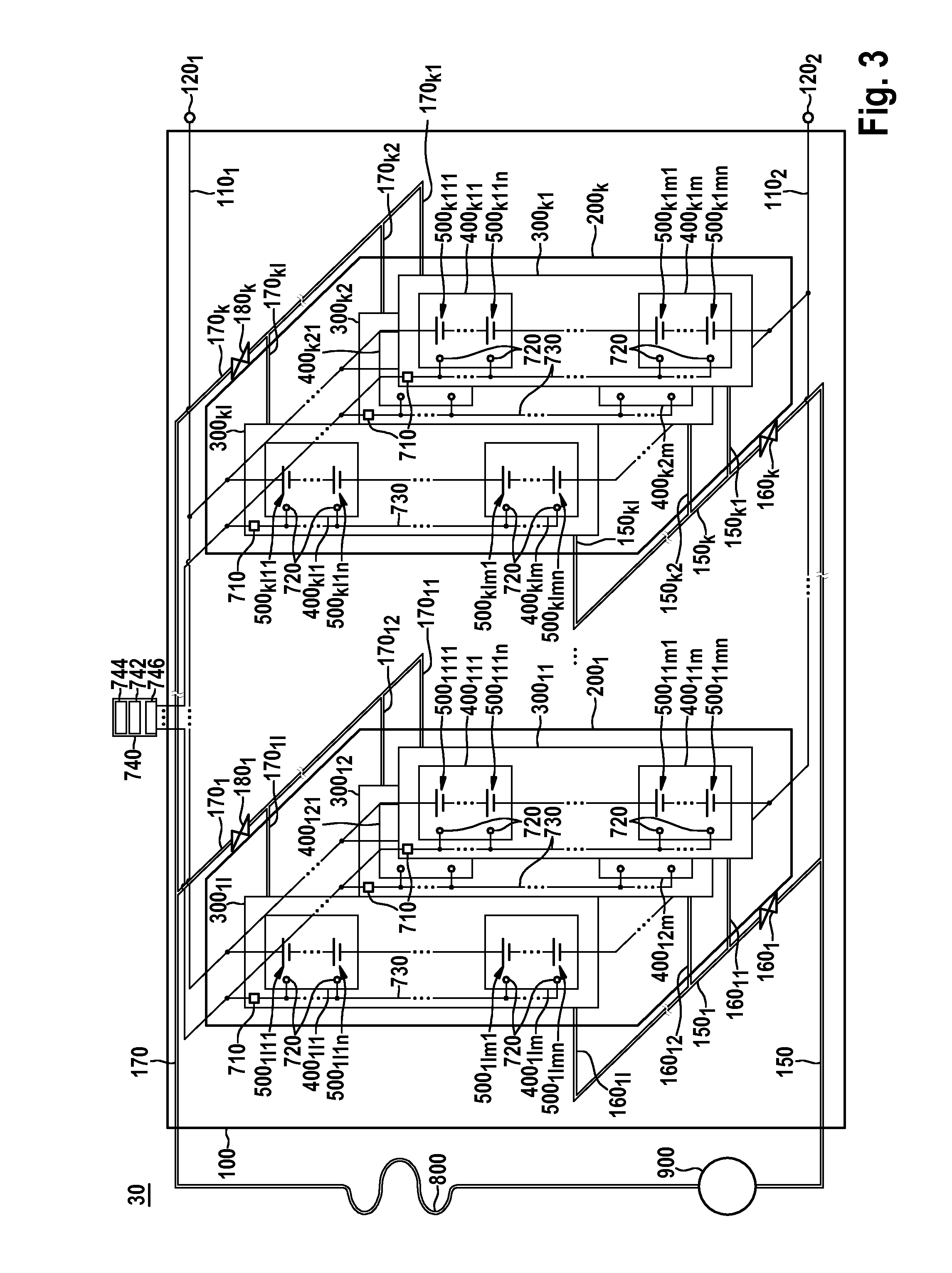Device and method for monitoring an energy store and energy store having the device
a technology of energy storage and energy storage, which is applied in the control arrangement of battery/fuel cell, electrochemical generator, battery/fuel cell, etc., can solve the problems of reducing affecting the reliability and disposability of energy stores or respective battery systems, and affecting the service life of battery cells. , to achieve the effect of reducing the risk of failur
- Summary
- Abstract
- Description
- Claims
- Application Information
AI Technical Summary
Benefits of technology
Problems solved by technology
Method used
Image
Examples
Embodiment Construction
[0038]FIG. 2 shows a schematic view of an energy store 20 according to one embodiment of the invention.
[0039]The energy store or respectively the battery system comprises a plurality of battery cells 5001111 to 500klmn. Each battery cell can, for example, have a voltage of 4.5 V and a capacity of 60-75 Ah. The plurality of battery cells 5001111 to 500klmn is arranged in a plurality of battery modules 400111 to 400klmn, so that each battery module comprises n battery cells. Each battery module can, for example, comprise n=11 to 13 battery cells that are connected in series and therefore have a voltage of 50-60 V and a capacity of 60-75 Ah. The plurality of battery modules 400111 to 400klm is arranged in a plurality of battery strings 30011 to 300kl, so that each battery string comprises m battery modules. Each battery string can, for example, comprise m=13 to 20 battery modules which are connected in series and thus have a voltage of 640-1170 V and a capacity of 60-75 Ah. The plurali...
PUM
 Login to View More
Login to View More Abstract
Description
Claims
Application Information
 Login to View More
Login to View More - R&D
- Intellectual Property
- Life Sciences
- Materials
- Tech Scout
- Unparalleled Data Quality
- Higher Quality Content
- 60% Fewer Hallucinations
Browse by: Latest US Patents, China's latest patents, Technical Efficacy Thesaurus, Application Domain, Technology Topic, Popular Technical Reports.
© 2025 PatSnap. All rights reserved.Legal|Privacy policy|Modern Slavery Act Transparency Statement|Sitemap|About US| Contact US: help@patsnap.com



